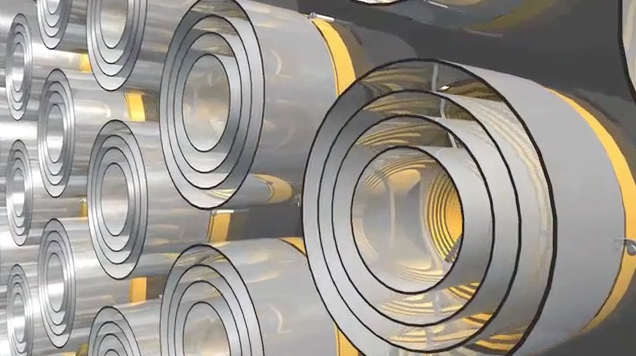NASA to launch first-ever neutron-star mission

This image shows the configuration of NICER's 56 X-ray mirrors that will gather scientific observations and play an instrumental role in demonstration X-ray navigation. Credit: NASA
Nearly 50 years after British astrophysicist Jocelyn Bell discovered the existence of rapidly spinning neutron stars, NASA will launch the world's first mission devoted to studying these unusual objects.
The agency also will use the same platform to carry out the world's first demonstration of X-ray navigation in space.
The agency plans to launch the two-in-one Neutron Star Interior Composition Explorer, or NICER, aboard SpaceX CRS-11, a cargo resupply mission to the International Space Station to be launched aboard a Falcon 9 rocket.
About a week after its installation as an external attached payload, this one-of-a-kind investigation will begin observing neutron stars, the densest objects in the universe. The mission will focus especially on pulsars—those neutron stars that appear to wink on and off because their spin sweeps beams of radiation past us, like a cosmic lighthouse.
See full text